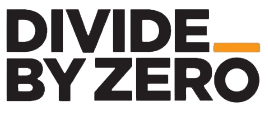The Rise of 3D Printing in Automotive Supply Chains
The Role of 3D Printing in Automotive Supply Chains
1. On-Demand Production:
• Flexibility and Efficiency: 3D printing allows manufacturers to produce components on demand, eliminating the need for large inventories and reducing storage costs. This flexibility enables automotive companies to respond quickly to changing market demands and customer preferences.
•Example: Spare parts for older vehicle models can be printed on demand, ensuring availability without the need for extensive warehousing.
2. Distributed Manufacturing:
• Localized Production: With 3D printing, production can be decentralized and distributed across multiple locations. This reduces the dependence on a single manufacturing site and allows for the production of parts closer to the point of use, reducing transportation costs and lead times.
•Example: Automotive companies can establish small-scale manufacturing hubs near major markets, allowing for rapid production and delivery of custom components.
3. Impact on Logistics and Inventory Management:
• Streamlined Logistics: The ability to produce parts on demand and closer to the point of use simplifies logistics and reduces the complexity of supply chains. This leads to lower transportation costs and shorter delivery times.
•Optimized Inventory: By reducing the need for large inventories, 3D printing minimizes the risk of overproduction and obsolescence. This optimization leads to cost savings and more efficient use of resources.
•Example: Just-in-time (JIT) manufacturing practices can be enhanced with 3D printing, allowing for more precise inventory management and reducing waste.
Insights from Industry Leaders
Expert Opinion: John Smith, Supply Chain Director at Global Auto Corp
• On-Demand Production: “3D printing has given us the ability to produce parts as needed, which has significantly reduced our inventory costs. We no longer have to worry about stockpiling components that may become obsolete.”
•Distributed Manufacturing: “Establishing localized production hubs has allowed us to cut down on shipping times and costs. This approach also provides greater flexibility in meeting regional demands.”
Expert Opinion: Mary Johnson, Head of Logistics at Auto Innovations
• Streamlined Logistics: “The integration of 3D printing has simplified our logistics operations. We can now produce parts closer to our customers, which not only reduces delivery times but also enhances our ability to provide customized solutions quickly.”
•Optimized Inventory: “By leveraging 3D printing, we have been able to adopt a just-in-time manufacturing approach. This has led to better inventory management and significant cost savings.”
Addressing Common Objections with Divide By Zero Technologies
Objection: High Initial Investment in 3D Printing Technology
Objection: Concerns About Production Speed and Scalability
Objection: Durability and Quality of 3D Printed Parts
Sparking New Ideas: The Future of 3D Printing in Automotive Supply Chains
The integration of 3D printing in automotive supply chains is just the beginning. Here are some innovative ideas to consider:
•Digital Inventory: Maintaining a digital inventory of parts that can be printed on demand, reducing the need for physical stock.
•Custom Manufacturing: Offering customers the ability to customize components, such as interior trims or exterior body panels, that are printed to their specifications.
•Sustainable Practices: Utilizing eco-friendly materials and additive manufacturing techniques to reduce the environmental impact of automotive production.


